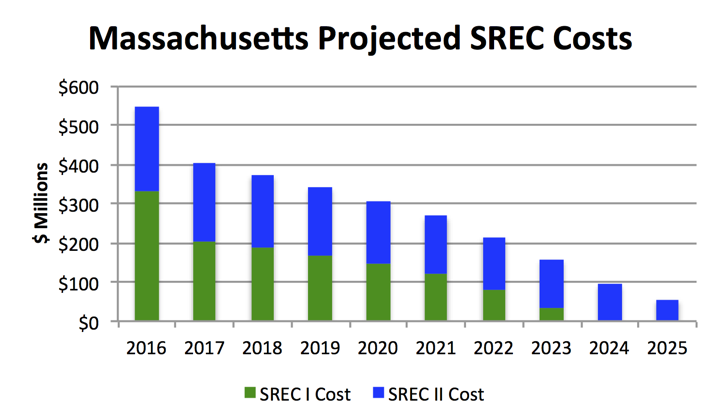Manufacturing Facts

You may remember the AIM infographic that claimed the average Massachusetts manufacturing business is spending $750,000 on solar incentives.
That average manufacturing business would have to be using 96 million kWh of electricity a year, enough electricity to power over 12,750 homes, and that business would be spending $17 million a year on electricity to reach those levels.
In the latest AIM letter - they now claim that only one of their members is spending $750,000 on solar incentives. So which is it AIM? All of your members - or only one of your members?
And as many organizations have documented, AIM has consistently overestimated SREC costs by a factor of two. What are the facts? In 2015, a manufacturing business in Massachusetts paid just 3/4 of a cent per kWh to support solar, in return for cleaner air, cleaner water, and lower healthcare costs (more on this below).
AIM would like businesses to believe that SREC costs are climbing - when we know that SREC prices will actually decline to zero over the first 10 years of production. And since solar energy systems have a useful life of 30 years, there will be zero SREC costs for the following 20 years of solar energy production. That works out to an average of 1/8 of a cent per kWh over 30 years.
To put this in perspective, that same business saw their electricity costs rise by 5 to 7 cents per kWh – 600 to 700% more than their solar investment - due to the energy price spikes we experienced during the last two winter seasons.
The $16 billion of pipelines and transmission lines being proposed by the utilities would also cause cost increases several hundred percent larger than solar investments. Utilities would like to sweep these huge costs under the rug because they earn monopoly profits on transmission and pipeline projects. They attack solar progress because solar creates competition for those monopoly profits.
Furthermore, how much is that business paying in increased health care costs associated from burning fossil fuels? In lost productivity when employees and their children end up in the hospital? Are those costs expected to decline over the next ten years?
How much is that business costing the rest of Massachusetts in health care costs, in lost productivity - when the electricity they use pollutes our air, our water, increases climate change, flooding from extreme storms, sea level rise, and according to MIT’s 2013 study “Air Pollution and Early Deaths in the United States”, contributes to over 4,700 deaths each year from fossil fuel related air pollution in Massachusetts, more than from all the murders, suicides, opioid overdoses and car accidents combined.


